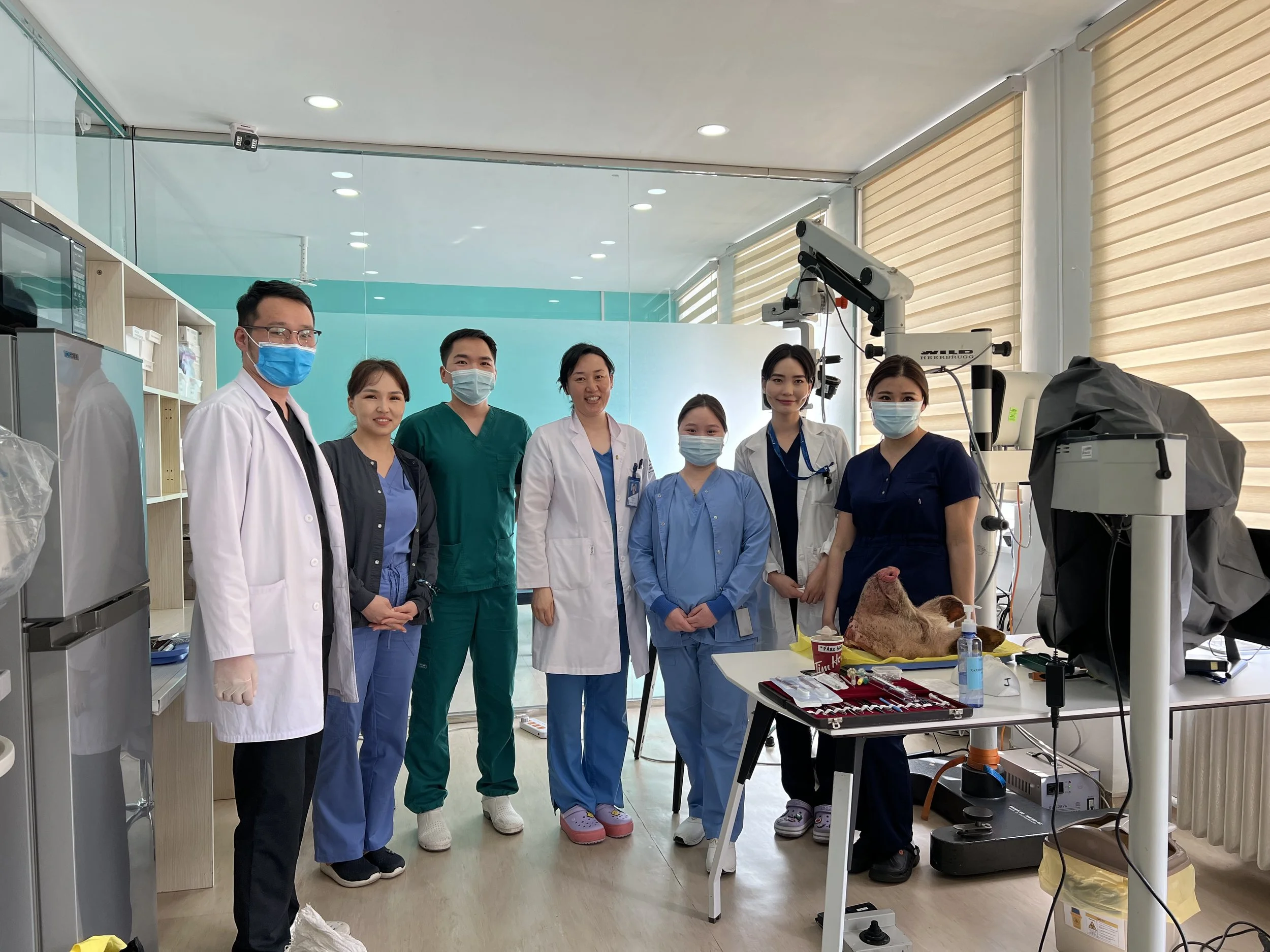Advancing Cataract Surgery Training in Mongolia: The Role of Pig Eye Wet Labs
Building Skills Through Practical Experience
Cataract remains one of the leading causes of reversible blindness worldwide, and Mongolia is no exception. High-quality surgical training is essential to address the country’s growing demand for cataract surgery, particularly in provincial areas where access to care is limited. One of the most effective methods for developing surgical skills is wet-lab training using pig eyes.
Unlike plastic or virtual simulators, pig eyes provide residents with the most realistic experience outside of operating on human patients. The anatomy and tissue response closely mimic human eyes, allowing trainees to practice incision techniques, capsulorhexis, phacoemulsification maneuvers, and suturing with remarkable fidelity. This hands-on preparation is invaluable in reducing the learning curve for cataract surgery, increasing both safety and confidence when residents transition to live patients.
Advantages of Pig Eye Training
Wet-lab practice with pig eyes offers several advantages for ophthalmology residents in Mongolia:
Realistic Anatomy and Tactile Feedback: Pig eyes replicate the size, density, and surgical handling of human eyes, giving residents an authentic sense of tissue resistance and instrument control.
Safe Environment to Learn: Residents can repeat critical steps such as capsulorhexis or nucleus removal multiple times, without the risk of patient harm. This helps them refine fine motor skills essential for delicate intraocular work.
Availability and Affordability: Pig eyes are relatively easy to source and cost-effective, making them an accessible training tool for residency programs across Mongolia.
Error Correction and Innovation: Mistakes made in the wet lab become valuable teaching moments. Residents can experiment with different surgical techniques and learn troubleshooting strategies in a risk-free setting.
Foundation for Independence: By the time residents reach the operating room, they already have developed muscle memory and confidence, significantly lowering complication rates.
LSF’s Role in Expanding Wet-Lab Training
Laurel Surgical Foundation (LSF) has been instrumental in promoting wet-lab training in Mongolia. Beyond providing pig eyes and surgical instruments for training, LSF funded the renovation of a dedicated wet-lab space within the residency program. This investment created a structured environment where ophthalmology residents can practice consistently under the guidance of local faculty.
The renovated space was designed to meet modern training needs; equipped with surgical microscopes and proper lighting. By supporting both infrastructure and resources, LSF has ensured that the wet-lab is not a temporary teaching aid but a permanent training hub for future generations of residents.
LSF also emphasizes standardized assessment in the lab. Residents are encouraged to log their practice sessions, receive structured feedback, and meet competency benchmarks before performing live cataract surgeries. This approach elevates surgical safety, improves outcomes, and lays the foundation for a sustainable ophthalmology training system in Mongolia.
Looking Ahead
For Mongolia, wet-lab training using pig eyes represents more than just a technical exercise—it is a bridge toward surgical independence and improved patient care. As more residents gain access to this form of training, the impact will extend beyond individual skill development. It will lead to safer surgeries, expanded cataract care in underserved regions, and the long-term strengthening of Mongolia’s healthcare system.
With continued investment in wet-lab facilities and training, supported by organizations like LSF, Mongolia is building a future where every ophthalmology resident graduates with the hands-on experience needed to restore sight safely and effectively.
